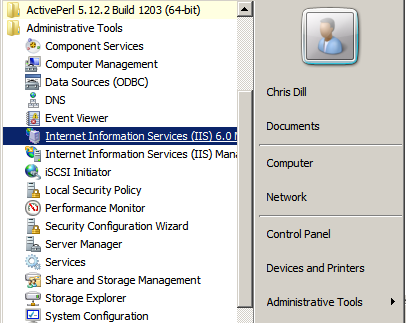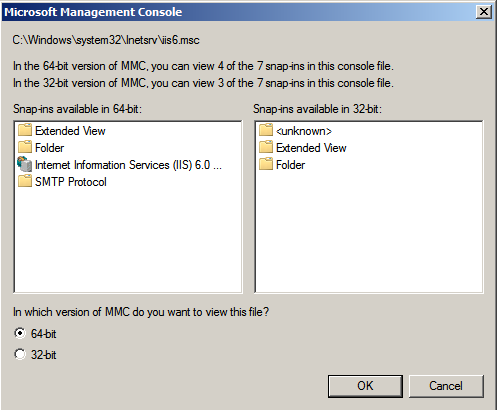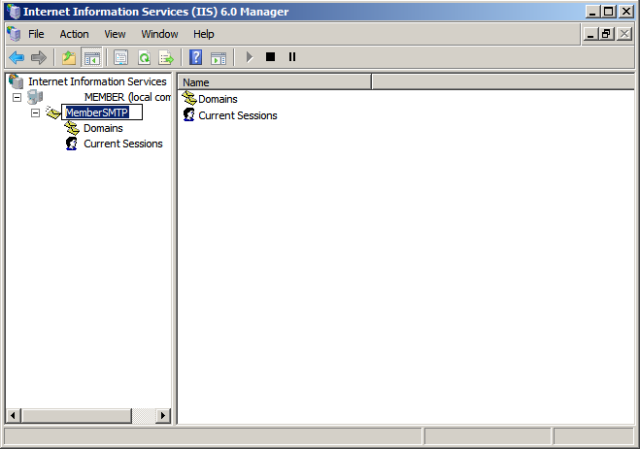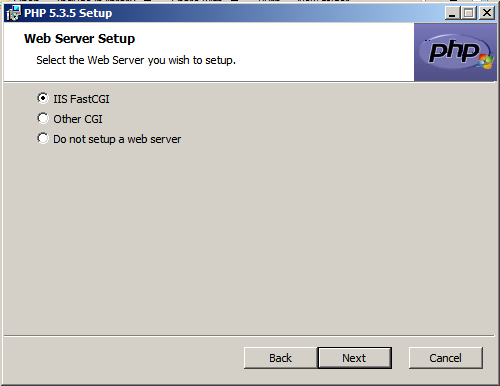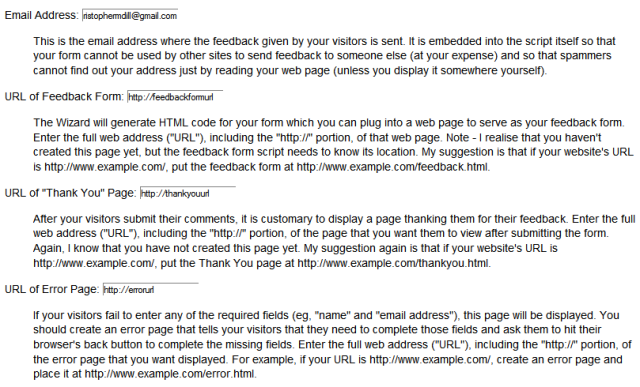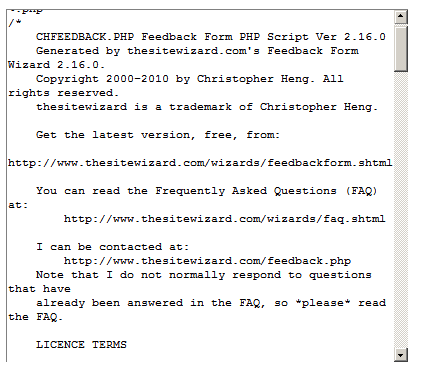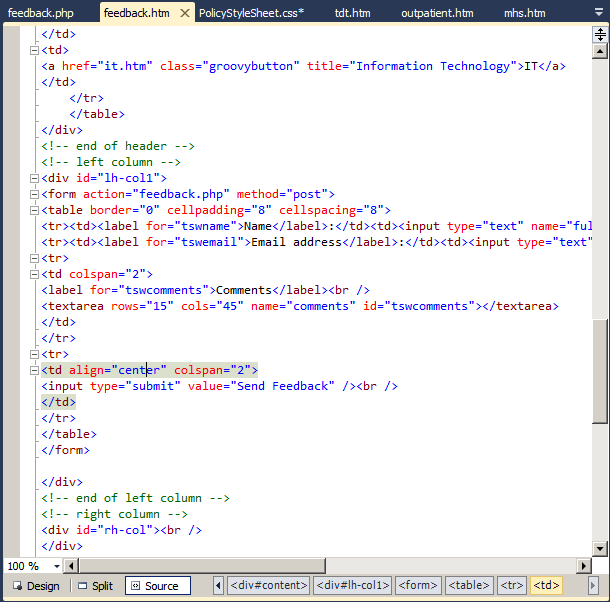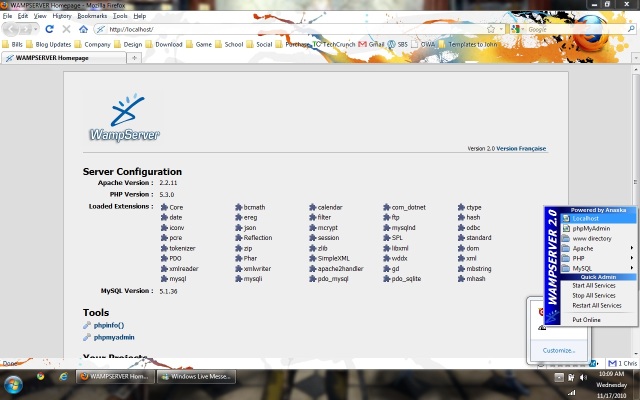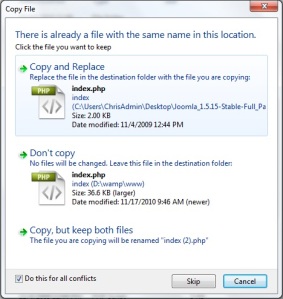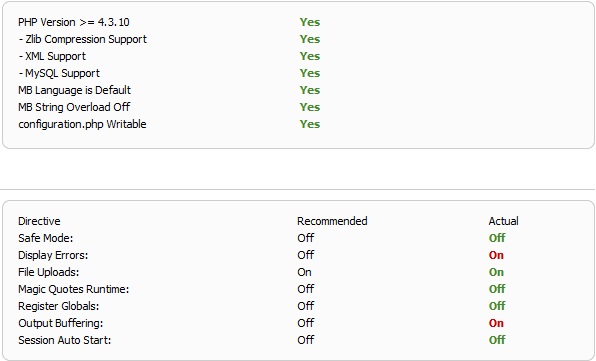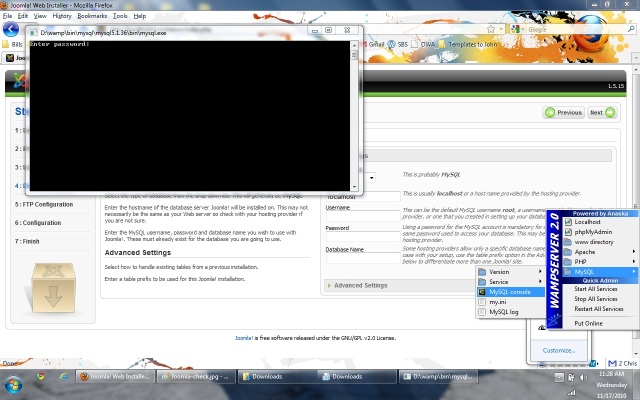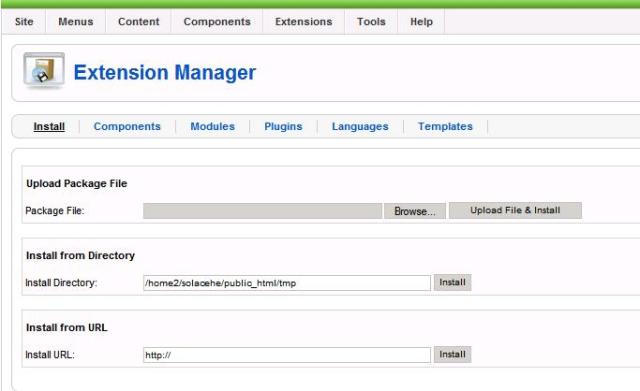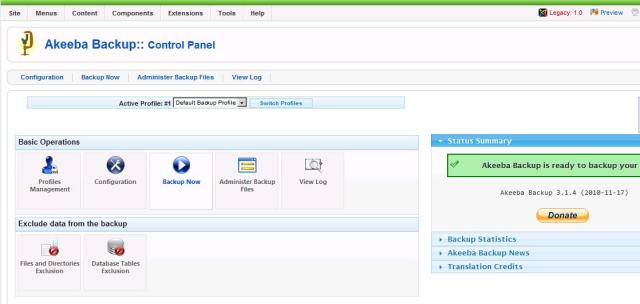I am designing a simple HTML site for my intranet. this site will host our policies and procedures, which have been split up into roughly 600 PDF files. The pages are written in HTML with CSS 2 completely from scratch. I use NTFS permissions and URLAuthorization to control who can visit the Windows Authentication website.
The site consists of five static pages, a little CSS trickery, and now, a bit of PHP. I decided that due to the sheer volume of the PDF file’s (which are linked from within the pages, and each file name is a slew of very specific policy numbers) that it would be difficult to pin point a broken link myself.
So I came up with the idea of a broken link (or feedback) page. A very simple page, with two input fields and a textarea field (Name, Email, Comment, respectively). A submit button finishes it off.
The problem with this is that when you hit submit and the mailto: runs, it opens up your default email program and populates a new message. this is ok, but what about people without an email client, or without one configured by default?
So I decide to use a bit of PHP to get my IIS to send my mail for me, in the background.
Here it goes.
First, my setup. I have a SBS 2008 running IIS 7.0, Exchange 2007, Sharepoint, pretty much everything. I then have a very low resourced Windows Server 2008 R2 member. This server does very little, but it does have IIS 7.5 installed, in order to run Lync Server 2010.
First thing we will do is install SMTP for IIS. Open up Server Manager, expand Features.
Click Add Features on the right, then select SMTP Server. Click Install.
Once that completes, you will have a new tool under Administrative Tools: Internet Information Services 6.0 Manager. Make sure it is 6.0, the other IIS Manager will not let you do this.
You might get a popup about 32 or 64-bit, choose 64 and click ok.
You will see Internet Information Services in the left window, with a sub-tree of your server name. Expand that node, and you will see VirtualSMTP. Right click that and select rename, and give it a good name- in this case I named mine MemberSMTP (It’s on my domain MEMBER).
Now right-click the renamed server, and select properties.
Click the Access Tab, then select Connections.
You want to enable the server that is hosting your website (the one that needs to sendmail) to use that server. I used the radio button Only The List Below (less access is good access).
Click Add, and add the loopback or localhost IP address of the server hosting the IIS if it is local. For good measure, I also added the true IP address of the server.
Click OK, and select the button Relay…
Set this up exactly as the other list.
Click Ok, Apply, and Ok.
Right click on the VirtualServer and select Start. If it is already started, click Stop, then Start again.
Thats it for the IIS part (roughly), now on to the PHP and the form itself.
Well, before we get into it, we need to have three web pages in our site. the form itself, named feedback.htm. We need a thank you page, named thanks.htm, and an error page, named error.htm. Put these in the root of your website. Here is the HTML from one of my pages.
Note that it will not work for you perfectly lacking my CSS.
<!--pan class="hiddenSpellError" pre=-->DOCTYPE html PUBLIC "-//W3C//DTD XHTML 1.0 Transitional//EN"
"<a href="http://www.w3.org/TR/xhtml1/DTD/xhtml1-transitional.dtd">http://www.w3.org/TR/xhtml1/DTD/xhtml1-transitional.dtd</a>">
<html xmlns="<a href="http://www.w3.org/1999/xhtml">http://www.w3.org/1999/xhtml</a>">
<head>
<title>Feedback</title>
<meta http-equiv="Content-Type"
content="text/html; charset=iso-8859-1" />
<meta name="Robots" content="NOINDEX" />
<meta http-equiv="PRAGMA" content="NO-CACHE" />
css"
href="PolicyStyleSheet.css" />
<style type="text/css">
.style1
{
color: #FFFFFF;
}
</style>
<!--[if IE 6]>
<style type="text/css">
/* some css fixes for IE browsers */
html {overflow-y:hidden;}
body {overflow-y:auto;}
#bg {position:absolute; z-index:-1;}
#content {position:static;}
.style2
{
color: #FF0000;
}
.style3
{
color: #999999;
}
</style>
<!--span class="hiddenSpellError" pre=-->endif]-->
</head>
<body>
<div id="bg"><img src="images/gradient.png" width="100%" height="100%" alt=""></div>
<div id="content">
<!-- Header -->
<div id="#hdr">
<table>80px; width: 80%;">
<tbody></tbody>
</table>
<tr>
<td> </td>
<img src="images/small logo no background.jpg"
style="height: 75px; margin-left: 10px;" />
<td align="center"><h1><a name="top">Report a Problem<br />
or Broken Link</a></h1>
</td>
<td>
<a href="feedback.htm" title="Feedback">Feedback</a>
</td>
</tr>
</table></div>
<div>
<table border="0" cellpadding="0" cellspacing="0"
style="height: 55px; width: 48%; margin-left: 50px;">
</table>
</div>
<div id="lh-col1">
</div>
<div id="rh-col"><br />
</div>
</body>
</html>
You pretty much just need three basic pages, with names you can remember, that have a head and body. you will customize them more later, or take the time to do so now. the error page should say something like “Sorry, you did not fill out the form correctly. Click here to return.” The thanks.htm should say something like “Hey thanks for taking the time! Go back to the site.”
Anyhow, the HTML/CSS lessons will have to come from someone else another time, if you can’t program HTML at this point, stop reading this post.
Now let’s install PHP. All of the romantics and programmers will tell you to manually install it. I don’t have time for all that, so I download the Windows binary here- VC9 x86 Non Thread Safe (2011-Jan-05 21:37:35). Once it downloads, double-click the msi file to start the install.
I selected to install all of the options. you can customize this the way you wish. Make sure to select IIS FastCGI when you get to that point.
Once that completes, we need to make a file in the root of our website. Open up Notapad and save the file as feedback.php. How you get it into your website is up to you. I actually use MS Visual Web Developer 2010, and just copied it into the file directory.
Now we need to make our script, and add some code to feedback.htm and feedback.php. there is a website that will generate it for you- go HERE. Thanks SiteWizard for such a great tool!
Scroll down and select Create a PHP feedback form, and select go to step 2.
Fill in your email address, or whoever you want to form results to be mailed to. Enter in the web address of your feedback page, thank you page, and error page. these were the feedback.htm, thanks.htm, and error.htm pages we already created. To get the correct address click on View in Browser from whatever program you are using to author your site, then copy the address for each page.
Skip over all of the optional selections. You can change these if you wish, but you don’t have to. Select to agree to the conditions, and click Generate Script.
The screen has two text areas. the top one is your feedback.PHP contents. Select all of the text, copy it, and paste it into your feedback.php file, using Notepad or your site editor.
Select the text from the second box and insert this into your feedback.htm page. It should go in the body of the page, in between <div></div> tags.
Now browse to your feedback.htm. Enter some information, and hit send. The email should arrive quickly.
If you have any problems with the HTML, post a comment and I will help out. If you have problems with IIS 7.5, ask away. If you have problems setting up PHP, view their documentation. If you need to change your PHP.ini settings, I can point you at an entry, but that’s it:
[mail function] ; For Win32 only. ; http://php.net/smtp SMTP = localhost ; http://php.net/smtp-port smtp_port = 25 ; For Win32 only. ; http://php.net/sendmail-from ;sendmail_from = me@example.com ; For Unix only. You may supply arguments as well (default: "sendmail -t -i"). ; http://php.net/sendmail-path ;sendmail_path =
And of course thanks again to TheSiteWizard.


